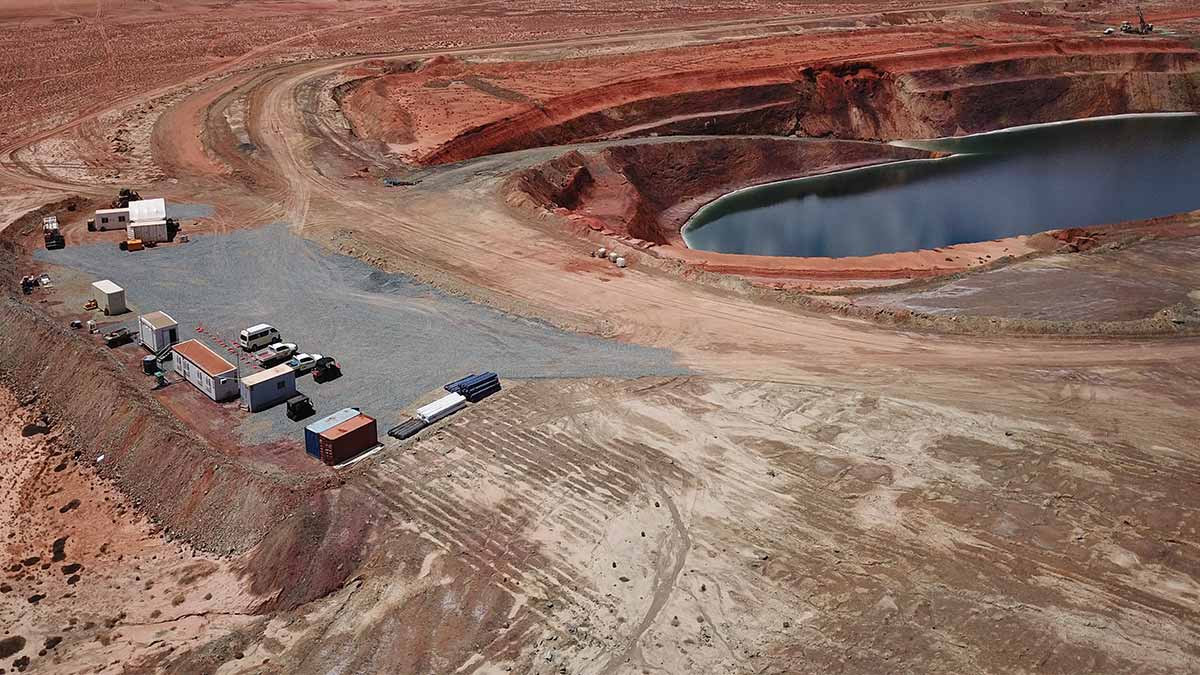You might be interested in
Mining
Australian SoP hopeful Salt Lake Potash collapses, owing US$127 million
Director Trades
Directors' Trades: Resources has been off the boil, but these directors just took a punt on their companies
Mining
Mining
Special Report: Salt Lake Potash has achieved a major milestone in its bid to lead the development of an Australian potash industry, starting construction on the country’s first commercial scale Sulphate of Potash (SOP) evaporation ponds.
The Ian Middlemas-chaired company (ASX: SO4) is one of about half a dozen groups listed on the ASX seeking to pioneer the production of SOP, a preferred choice of high-quality potassium fertiliser, from Western Australian salt lakes.
The company announced this week it had received final approval from the WA Department of Water and Environmental Regulation, clearing the way for construction of the Lake Way Ponds near the northern goldfields town of Wiluna to begin.
The timely commencement of construction at Lake Way has given Salt Lake Potash strong claims to being the first of the SOP hopefuls to achieve commercial production.
“It is a very exciting time as we begin construction on Australia’s first commercial scale on-lake evaporation pond system,” managing director Tony Swiericzuk, who joined the company in November after nine years with Fortescue Metals Group, said.
“This is a key milestone not only for Salt Lake Potash but also for the creation of the new SOP industry within Australia.
“We will continue to progress works at Lake Way on both the construction of the first phase of evaporation ponds and on the exploration of the ‘whole of lake’ development options, which we believe will underpin a globally significant SOP operation.”
The initial Lake Way ponds will have a volume of 1.8 gigalitres, sufficient to capture the total measured brine resource in the nearby Williamson pit of 1.2 gigalitres at 25kg/m3 SOP equivalent.
This equates to 32,000 tonnes equivalent of premium SOP and represents the highest-grade brine resource in Australia.
Dewatering of the Williamson pit brine is expected to commence during the June quarter immediately upon completion of pond construction.
Extensive exploration activity is also underway across the whole of Lake Way – including the identified paleochannel – as the company seeks to optimise the project’s significant resource potential.

This is the “whole of lake” development scenario that Swiericzuk alludes to.
While Lake Way is Salt Lake Potash’s initial focus, the company has a significant portfolio of 11 salt lakes within the goldfields region totalling over 5,000km2 of playa surface, giving it the potential to scale up production rapidly.
Each of the lakes have been selected based on potential brine volume, known hypersaline brine characteristics and the potential for production from shallow trenches or deeper paleochannel aquifer bores.
They are also all proximal to established transport infrastructure, which will be important in minimising operating costs.
The global market for SOP – which commands a premium price over Muriate of Potash (MOP), a high chloride fertiliser that is not as environmentally friendly – is currently around seven million tonnes a year.
That is forecast to increase to more than 11 million tonnes by 2028 as populations urbanise and improve their standard of living and diets, and the amount of arable land decreases.
Salt Lake Potash has signed memorandums of understanding (MoUs) with China’s leading fertiliser supplier Sinofert and Mitsubishi Corporation around offtake.
Shares in the company jumped almost 6 per cent to 54c on Wednesday, capitalising it at $111.5 million.